Small Garden Design: Big Impact
It’s a common dilemma for homeowners: gardens are getting smaller, especially in new builds, and clients often ask how to make their small garden look and feel bigger. The good news is that limited space doesn’t mean limited potential. With thoughtful design techniques, a small garden can feel spacious, layered, and full of personality.
Here are six clever ways garden designers create the illusion of space.
1. Use Perspective to Make a Small Garden Look Larger
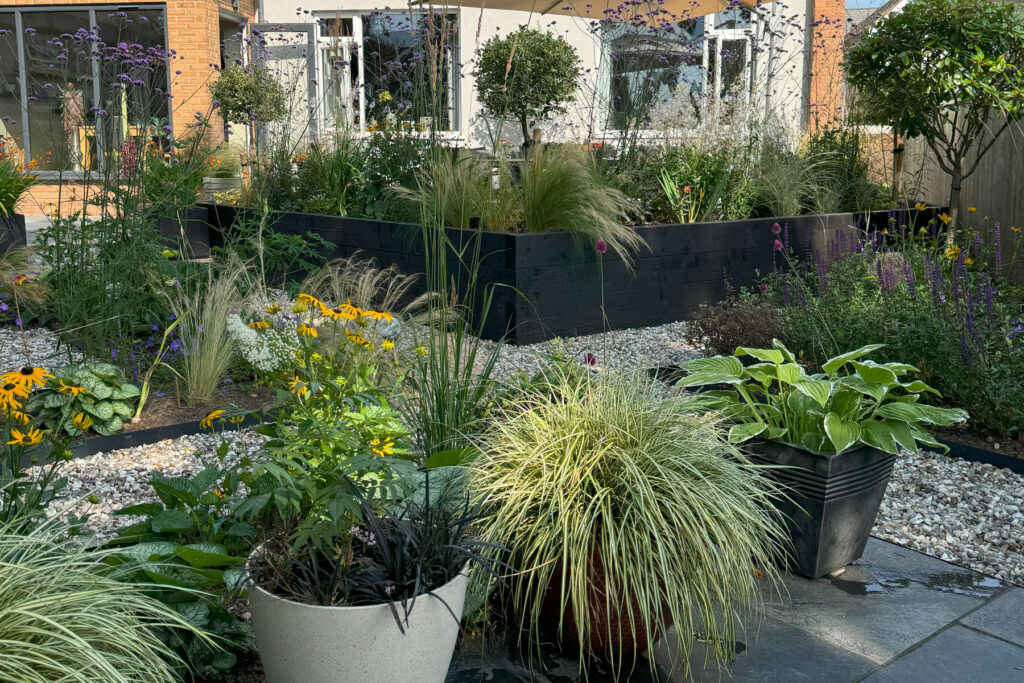
One of the most effective tricks in small garden design is using perspective. Just as artists use vanishing points to create depth, garden designers guide the eye through space with narrowing paths, staggered planting, and changes in scale.
- A pathway that starts wide and tapers toward the back of the garden creates the illusion of distance.
- Placing larger plants or features closer to the viewer and smaller ones further away mimics natural depth.
- Laying paving and pathways at a 45-degree angle - as we've done here in a Kenilworth client's garden - can make a small garden appear longer.
2. Divide Small Gardens into Zones
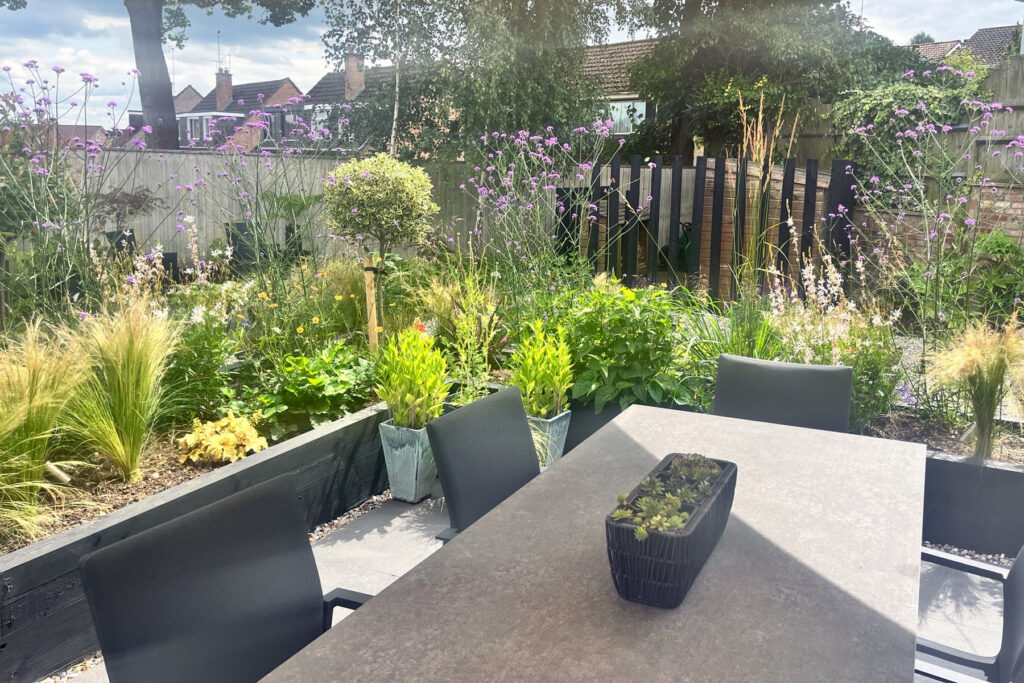
It may seem counterintuitive, but breaking up a compact garden into smaller “rooms” can make it feel bigger. Instead of revealing the entire space at once, divide the garden into zones such as a dining nook, seating area, or planting bed. We created 4 distinct zones in our client's garden shown here - an entertaining space, planting, relaxing and utility zone all encompassed in one, compact garden space.
Pergolas, trellises, or even a change in paving material can define these areas while keeping a cohesive feel. Screening part of the space with plants or hard materials adds curiosity and encourages exploration, helping the garden unfold gradually.
3. Go Vertical with Planting and Features
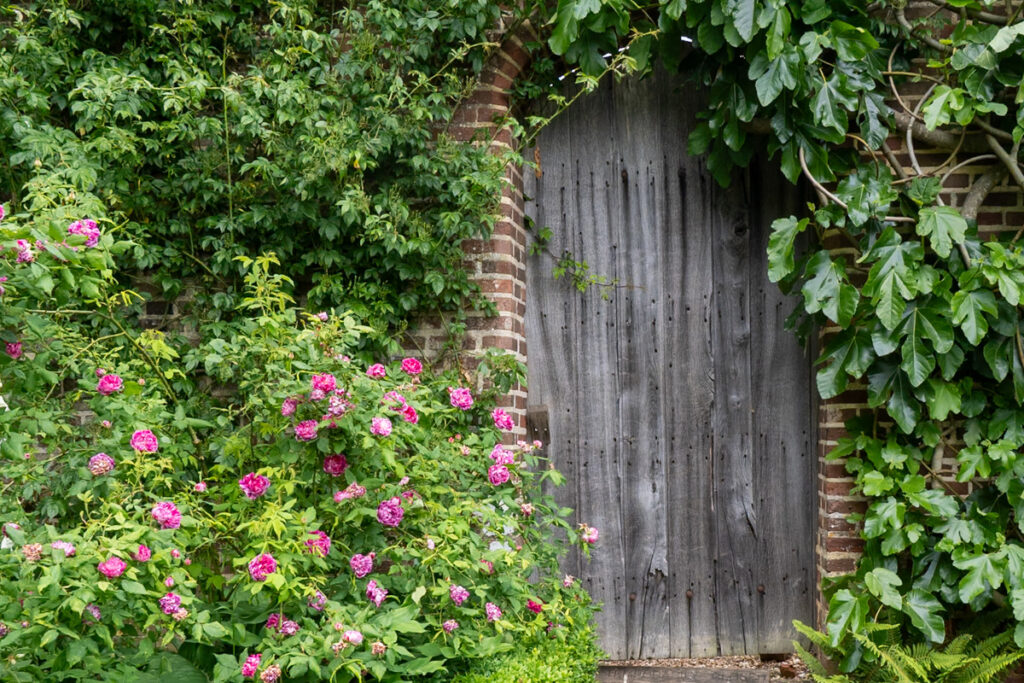
When ground space is limited, look upwards. Vertical design elements such as wall-mounted planters, trellises, green walls, or espaliered trees add layers of interest and draw the eye skyward.
Climbing plants like clematis, jasmine, or climbing roses soften hard boundaries and add seasonal colour and fragrance without taking up precious ground space, illustrated beautifully in this little corner of Sissinghurst.
4. Use Lighting and Mirrors to Expand Small Spaces
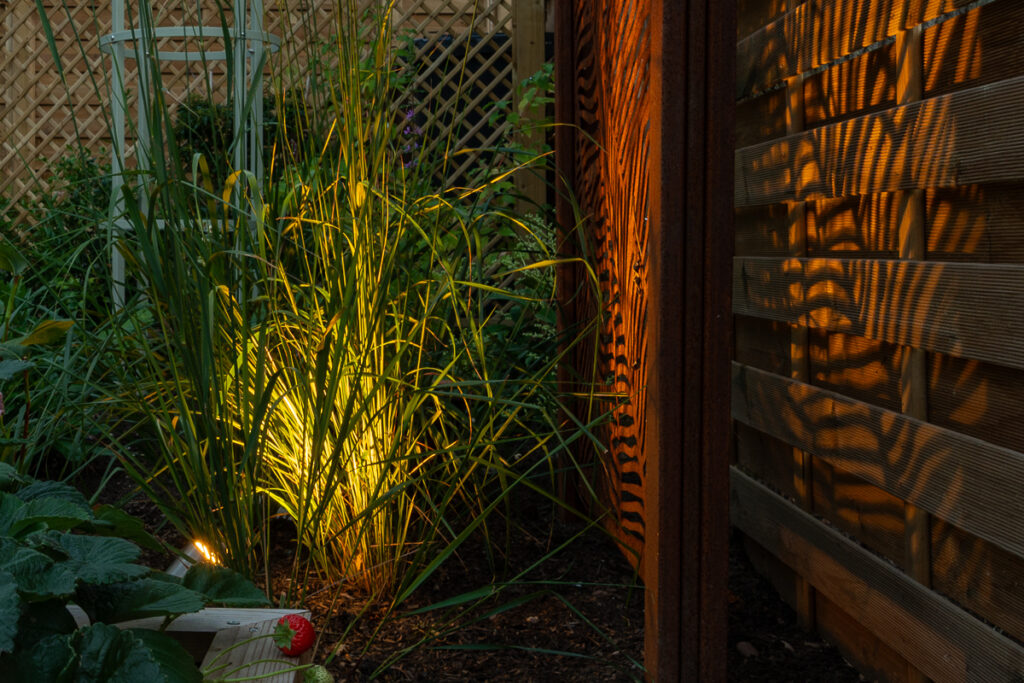
Lighting is a powerful way to enhance the sense of space. Uplighting a tree, backlighting planting, or adding subtle under-bench lighting creates depth and atmosphere, particularly in the evening. We chose to uplight a patterned screen in our Solihull clients' garden, shown here, to throw interesting shadows onto the boundary at night.
Mirrors are another clever tool. Positioned carefully, an outdoor mirror can reflect planting, light, or sky, making the garden feel twice as big. To keep it natural and safe for wildlife, angle mirrors slightly or partially conceal them with plants.
5. Choose a Cohesive Colour and Planting Palette
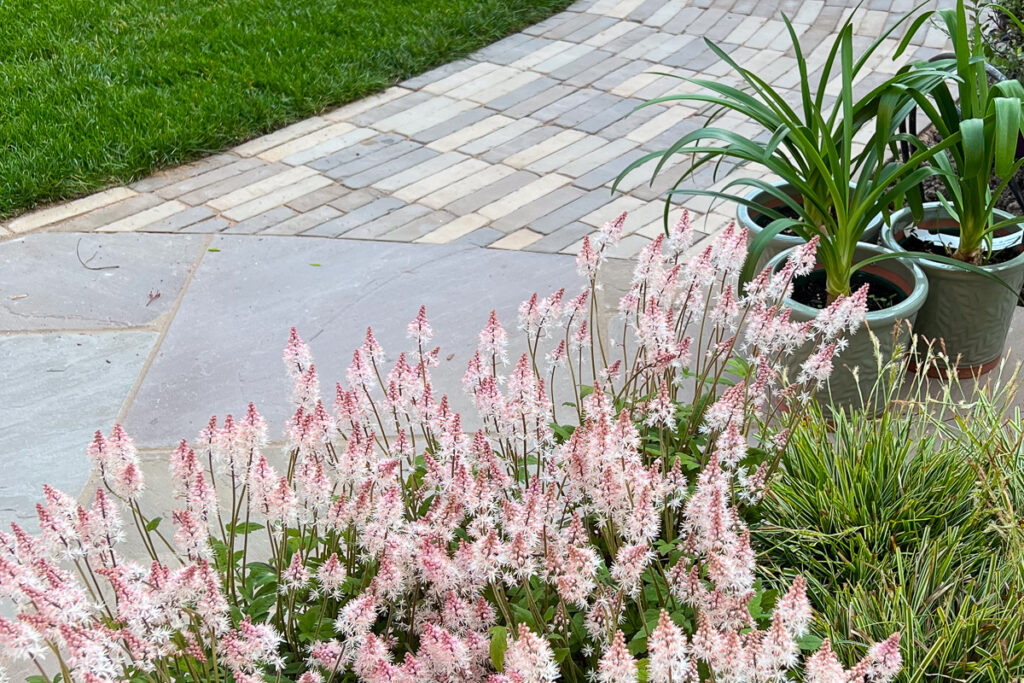
In smaller gardens, too many materials or colours can make a space feel cluttered. Instead, stick to a harmonious palette of two or three hard landscaping materials and a restrained plant selection as we did here for a Tamworth client.
Repetition of shapes, colours, or textures creates rhythm and flow, helping the garden feel calmer and more spacious.
6. Add a Focal Point to Draw the Eye
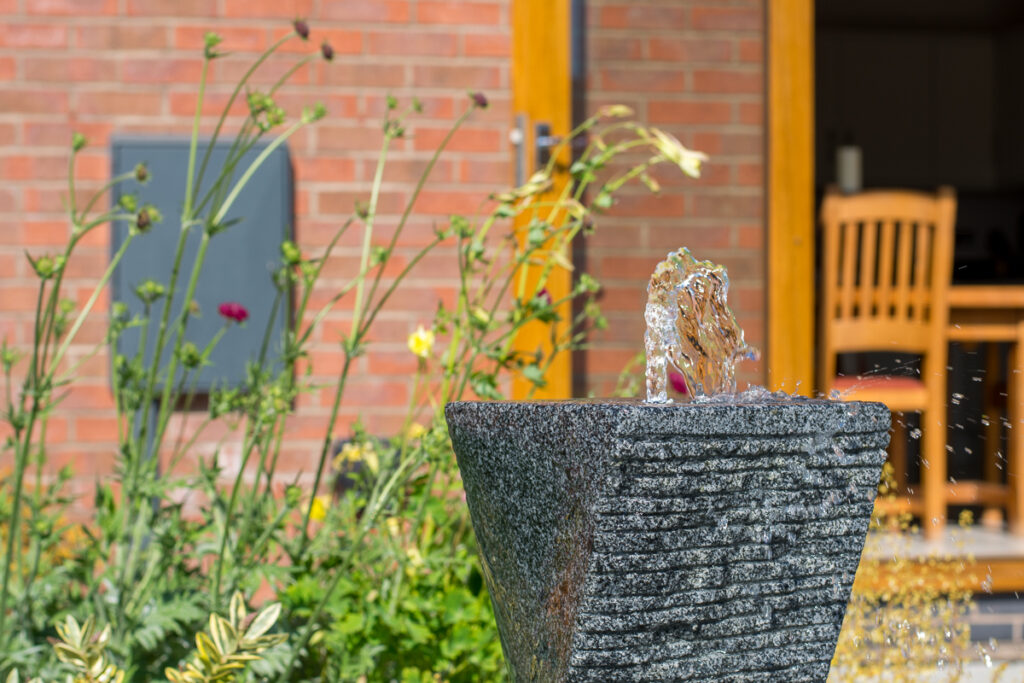
Every small garden benefits from a focal point. This could be a sculpture, water feature, specimen plant, or even a beautifully designed bench. A well-placed focal point anchors the design and gives the eye somewhere to rest.
Positioning a focal feature at the far end of the garden, or just out of immediate sight, encourages movement through the space and makes the garden feel deeper than it really is. We offset this beautiful water feature away from the patio doors in our Meridan client's wide but shallow garden. Our clients could hear the water but couldn't see it directly from many parts of their indoor space, drawing them outside to explore.
Conclusion: Small Garden Design That Feels Spacious
Designing a small garden is about creating illusions, managing perspective, and guiding the viewer’s journey. Through smart zoning, vertical planting, cohesive materials, and clever use of light and focal points, even the smallest garden can feel generous and inviting.
Thinking about redesigning your own small garden? Get in touch to find out how we can transform your outdoor space into a beautiful, functional retreat.




